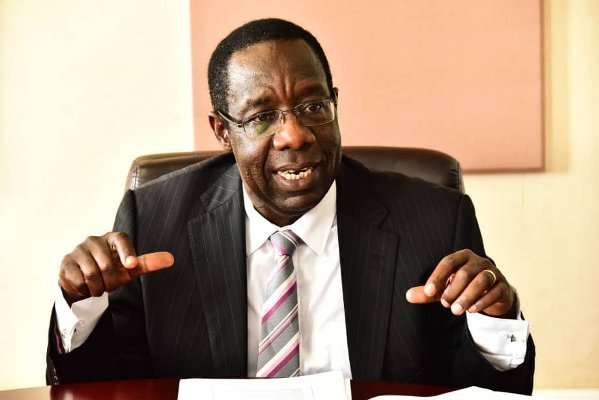A woman in Gulu district attending to her maize garden/ Photo by Emmy Daniel Ojara
Farmers in the Acholi sub-region are facing significant losses as the first-season yields are affected by a prolonged drought, causing crops to wither in their gardens.
Maize, beans, and groundnuts have been particularly severely affected, while soybeans are struggling to survive amidst the scorching sun.
Lamwo and Omoro districts are among the hardest hit, with farmers in Padibe East, Potika, Palabek Kal, Nyimur, Palabek Ogili Sub Counties, and Odek Sub County experiencing substantial crop damage.
Typically, the first season rains begin in mid-April and end in June, but this year, they started in mid-March and stopped in early May. One affected farmer, Odye Dickson from Potika village in Lamwo district, had planted sesame (sim-sim) on 5 acres, chia seeds on 2 acres, and beans on 3 acres. Unfortunately, the beans dried up immediately after flowering due to the drought, and Odye expects reduced yields from the remaining crops.
The farmers expressed disappointment after investing heavily in quality agricultural inputs, only to have their efforts rendered meaningless by the weather conditions.
Polline Abalo, a farmer from Amuwolo Dino in Odek Sub County, Omoro district, had high hopes due to the early arrival of rains but was devastated when the dry spell hit the crops during the flowering stage.
However, Christine Apoto, a farmer from Akoyo village, Odek Sub County, Omoro district, managed to survive the drought to some extent because she planted her crops near a water stream.
She remains hopeful for her eleven-acre maize garden, situated close to the stream, as it nears harvest and appears to be in good condition.
Michael Okot, another farmer from Padwat West village, Nyimur Sub County in Lamwo district, advises fellow farmers to prepare for the unpredictable climate if they are to generate profits from farming.
“In this part of the world we still largely depend on rainfall for production and therefore farmers have to prepare for worst climatic changes effects,” Okot said.
Dominic Idro, the Director of CAPABLE International, an organization supporting farmers in Northern Uganda, acknowledges the real challenges posed by climate change in the region. “This is a battle that is real and it is sad when a farmer losses crops after the hard work associated with farming, to climate change,” he said.
He urges the community to adopt mitigation methods to combat climate change, as it is disheartening to witness farmers lose their crops after their hard work. In contrast, farmers in Nwoya district, particularly in Koch Lii Sub County, seem to be less affected by adverse weather patterns, benefiting from relatively consistent rainfall and sunshine.
Experts warn that if the drought continues, it could lead to food insecurity and famine. According to a press release by IGAD’S Climate Prediction and Applications Centre (ICPAC) in May 2023, insufficient rainfall is expected in northern Uganda and other countries bordering Uganda until the end of the season. Meanwhile, Paul Kilama, the Gulu District Agricultural Officer, recently emphasized to URN that relying solely on rainfall for farming is no longer sustainable for smallholder farmers in the face of climate change.
-URN





